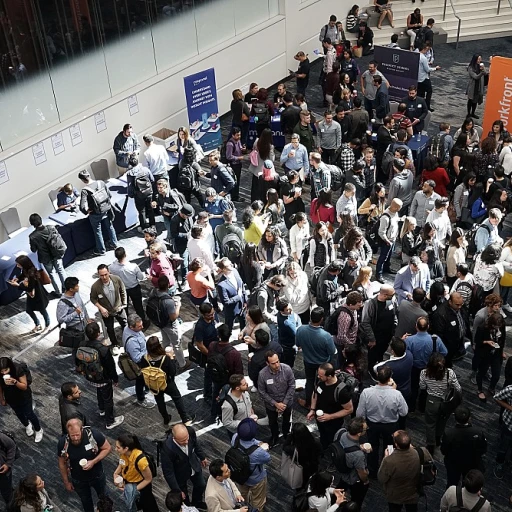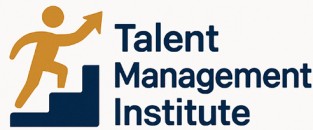
Understanding Talent Management System 2.0
Revolutionizing Talent Strategies with Advanced Systems
Understanding Talent Management System 2.0 is pivotal for organizations looking to thrive in today's competitive business environment. This advanced version of TMS encompasses a comprehensive range of solutions designed to enhance various facets of talent and management processes, from recruitment onboarding to workforce planning and employee engagement. Modern TMS tools offer a holistic approach to managing an organization's greatest asset: its people. As organizations integrate systems that cover talent acquisition, goal setting, performance management, and employee development, they are better equipped to nurture and grow their workforce. The evolution of talent management involves the seamless integration of technology into traditional management practices. Software like SAP SuccessFactors enables businesses to streamline processes, encouraging efficient performance management and HR initiatives. Organizations are increasingly focusing on strategic goals with the aid of system talent management, implementing long-term planning to ensure they are meeting the developmental needs of their employees. Through effective management succession and workforce planning, companies can build strong pipelines for talent, ensuring that critical roles are filled with capable individuals who drive business success. Furthermore, the focus is shifting towards data-driven decision-making, allowing managers to utilize real-time data to enhance performance and succession planning. In this dynamic environment, employees receive timely feedback, supporting their growth and career development, while aligning with the company's overall objectives. For those interested in exploring successful implementations and advanced TMS solutions, the Talent Management Institute offers valuable insights into systems like those utilized by organizations such as VA Gov. Learn more about exploring the talent management system at VA Gov to understand how these systems support robust talent strategies.The Role of AI and Automation
Leveraging AI to Streamline Operations
The integration of AI and automation within talent management systems has become a transformative force in streamlining various HR processes. AI-powered technologies are particularly effective in enhancing tasks such as recruitment, employee onboarding, and performance management. By automating routine processes, businesses are able to significantly reduce operational burdens and focus more on strategic initiatives, such as succession planning and employee engagement strategies.
Within the domain of talent acquisition, AI's role has expanded to include applicant tracking systems that efficiently sift through resumes, identifying candidates that best match job descriptions. In the sphere of navigating digital talent management, AI algorithms assess candidate data in real time, allowing HR teams to make informed decisions swiftly. Such AI-driven systems also offer insights into candidate compatibility with organizational culture, thereby contributing to long-term employee satisfaction and retention.
Moreover, AI aids in enhancing performance management by providing real-time feedback and automating goal-setting processes. This not only supports employee development but also ensures alignment with business objectives through well-planned career development pathways. The personalized learning development modules available through AI-driven tools empower employees, thus fostering a proactive workforce that is geared towards achieving strategic goals.
For organizations aiming to embrace AI in their talent management frameworks, understanding data management is crucial. Robust data analytics capabilities enable organizations to gain insights into workforce planning, skill gaps, and performance trends. Such data-driven decision-making processes not only fortify employee development strategies but also bolster overall business success.
Challenges in Implementing New Systems
Navigating the Hurdles in System Integration and Adoption
Implementing a new talent management system (TMS) can be both a transformative opportunity and a challenging endeavor for organizations. As businesses strive to enhance performance management and succession planning, they often encounter several hurdles that need careful consideration and strategy. One of the predominant challenges lies in ensuring seamless integration with existing systems. Many organizations utilize a range of software for various HR functions, such as talent acquisition and workforce planning. These systems must harmonize for smooth data flow, which is crucial for real-time decision-making and effective employee development. The absence of effective integration can lead to data silos, impeding overall business performance. Moreover, organizations need to handle change management effectively to facilitate a smooth transition for employees. The management talent necessary for this transition includes boosting employee engagement and providing learning development opportunities. Training and onboarding performance are vital during this phase to minimize disruptions. Customization and flexibility, though beneficial, also present a challenge. Each business has unique needs influenced by its workforce planning and career development goals. Striking the right balance between tailoring the system to fit specific needs and maintaining an overarching standardized process is critical. Feedback from employees during the onboarding process is invaluable. It helps refine the system to better align with employee skills and business strategies. Continuous feedback loops can ensure that the management system remains relevant and effective in the long term. Another aspect to consider is the human element within the system talent. To avoid potential resistance, clear communication of the system's benefits in terms of performance management and succession planning is essential for workforce buy-in and sustained use. It’s crucial for businesses to anticipate these potential pain points and plan accordingly to foster a culture of acceptance and growth. Organizations exploring TMS adoption must be prepared to navigate these complex landscapes. For further insights on enhancing talent management, a strategic approach could be beneficial in achieving a successful system implementation.Customization and Flexibility
Tailoring Systems for Organizational Needs
In today's dynamic business landscape, organizations are increasingly seeking talent management systems that are not only robust but also flexible. These systems need to accommodate various processes such as talent acquisition, performance management, and career development, ensuring they align with unique business strategies and requirements. Customization and flexibility have become essential in addressing these needs.
One of the most significant advantages of modern talent management systems is their ability to be tailored to fit specific organizational workflows. This adaptability allows businesses to streamline their talent management strategies, including employee development, workforce planning, and succession planning. By customizing processes, companies can focus on real-time feedback and goal setting, which are critical for fostering employee engagement and optimizing performance.
Software solutions like Sap SuccessFactors are designed to cater to diverse organizational demands. These platforms offer comprehensive functionalities that help in crafting a bespoke talent management experience. From recruitment onboarding to learning development, modern systems support each phase of the employee lifecycle, making them indispensable tools in retaining top talent.
Another pivotal aspect of customization is the capacity of a talent management system to evolve alongside the organization. Companies should choose systems that allow periodic updates and integrations, ensuring they remain relevant and useful over time. This flexibility extends to data management as well, enabling businesses to leverage data-driven decision-making in planning and improving overall employee performance.
Finally, offering a free demo can provide a valuable insight into how a talent management system can be personalized to meet an organization's needs. It allows companies to experiment with features, assess user experience, and decide on the most effective paths for their future talent management journeys.



-large-teaser.webp)








